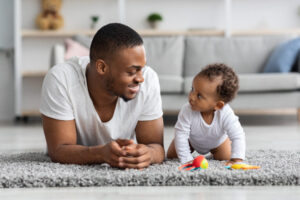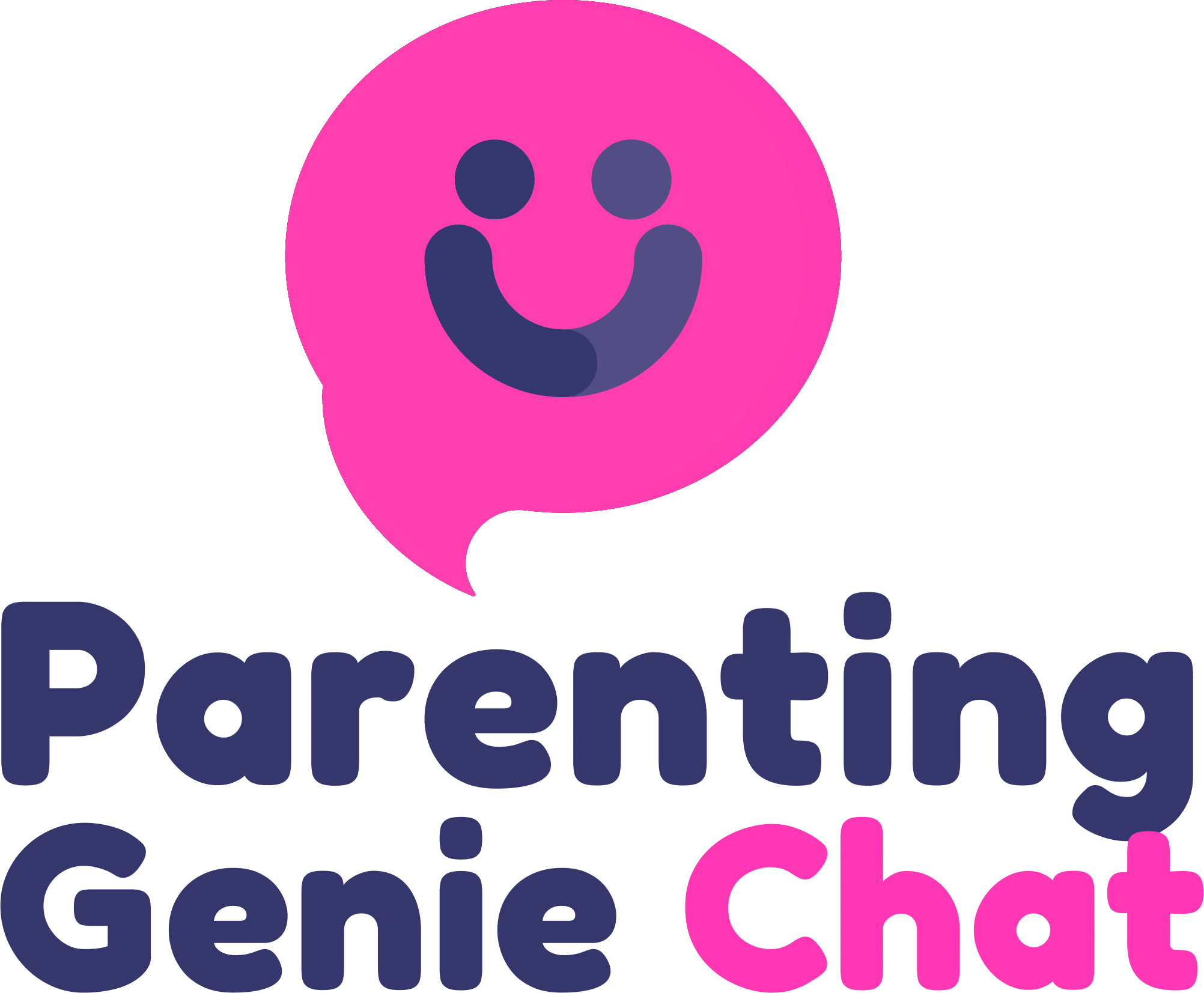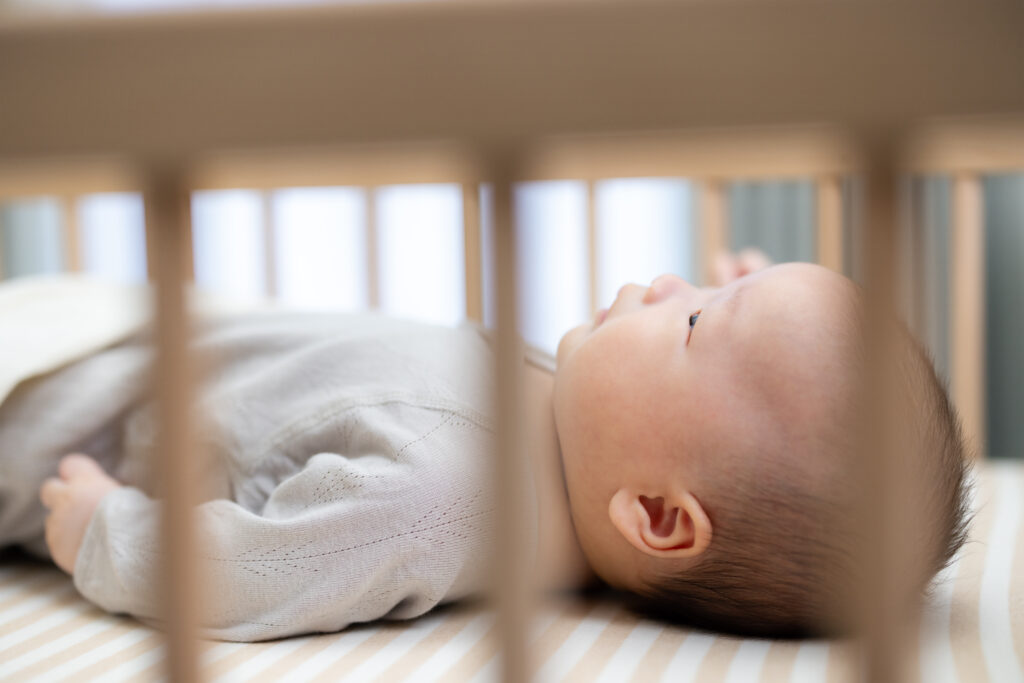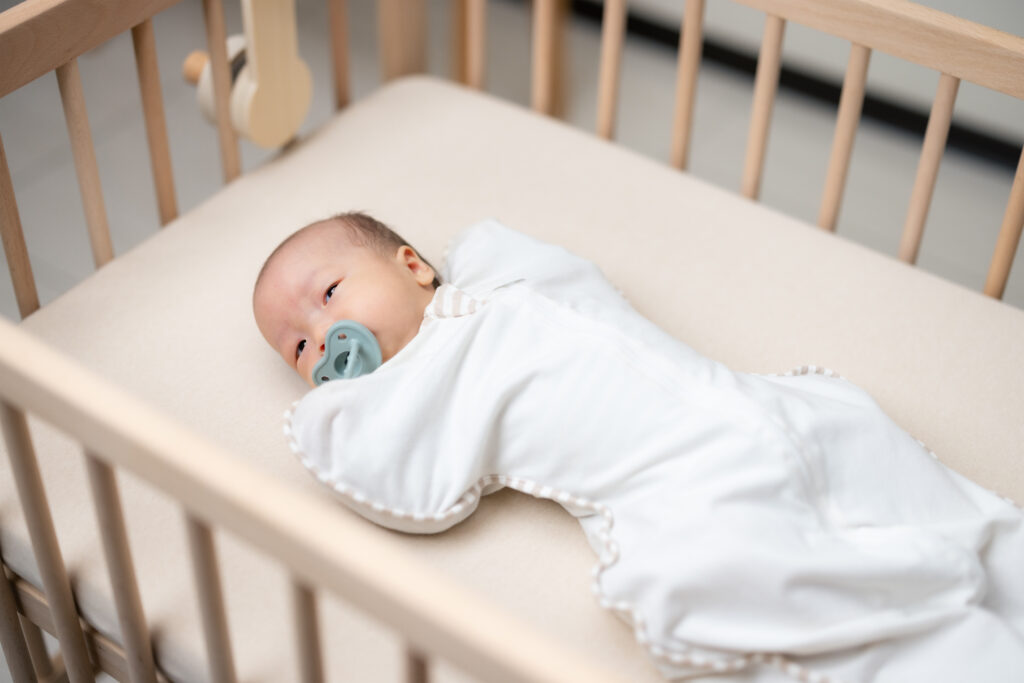
- +61 1300 704 750
- admin@parentinggenie.com.au
- PO Box 706, Townsville, QLD 4810

Genie Chat

It’s 2 a.m., and Emma quietly tiptoes into her baby’s room. She leans over the cot to check if her little one is still breathing. She gently adjusts the blanket, then lies awake, wondering if she’s doing everything right. If you’ve ever felt that mix of love and fear in the middle of the night, you’re not alone. Every parent wants to keep their baby safe — and when it comes to sleep, knowing the proper guidelines can bring peace of mind. Safe Sleep Environment!
That’s where safe sleep practices come in. By creating the right safe sleep environment, you can reduce the risk of sudden infant death syndrome (SIDS) and help your baby sleep more soundly.
Sleep is essential for your baby’s growth and development, but it’s also a vulnerable time. SIDS and SUDI (sudden unexpected death in infancy) remain a leading concern for new parents. While the exact cause of SIDS is unknown, research shows that consistent safe sleep can dramatically reduce risks.
The good news? Small, simple changes make a big difference. When you know what’s safe and what to avoid, you can feel more confident every time you put your baby to sleep.
A safe sleeping environment is the foundation of protecting your little one. Here are the essentials every parent should follow:
Think of your baby’s sleep space as a clean, clear, and simple zone. Less really is more when it comes to safe sleep.
Red Nose Australia and other global authorities highlight seven key safe sleep recommendations:
These practices are not just guidelines; they are life-saving.
Did you know that breastfeeding can reduce the risk of SIDS? Babies who are breastfed, even partially, have a lower chance of sudden infant death. This is because breastfeeding helps regulate breathing, provides immune protection, and supports healthy sleep patterns.
Combining breastfeeding with safe sleep guidelines — such as keeping your baby on their back in a cot or bassinet — gives parents an extra layer of reassurance.

It’s natural to question safe sleep advice, especially when you hear conflicting opinions. Let’s address a few common concerns:
Safe alternatives like swaddling (for newborns) or sleep bags (for older infants) can provide comfort while keeping the environment safe.
1. Can I use a baby monitor?
Yes, monitors give parents peace of mind. Just remember, they don’t replace safe sleep practices.
2. What mattress is safest?
Choose a firm, flat mattress with a snug-fitting sheet. Avoid second-hand mattresses with sagging or soft spots.
3. When can my baby have a pillow?
Not until at least 2 years old. Before then, pillows increase the risk of suffocation.
Every small step matters when it comes to your baby’s safety.
Safe sleep guidelines can feel overwhelming, but remember — you don’t have to do this alone. Parenting Genie offers tools and expert support to help you feel confident.
Infant sleep can be unpredictable, but safe guidelines help reduce risks and give parents peace of mind. It’s essential to ensure your baby doesn’t fall asleep in unsafe places like couches or car seats for long periods. Hazards such as cords or loose bedding can increase the chance of strangulation, so keeping the sleep space clear is vital. Following recommendations also lowers the risk of sudden unexpected death, giving your baby the safest possible start.
Parenting comes with endless questions, especially when it comes to sleep. By following safe sleep guidelines, you can reduce risks, feel more confident, and enjoy more peaceful nights.
Safe sleep isn’t about perfection — it’s about consistency. Each time you lay your baby down in a safe sleep environment, you’re protecting them and giving yourself the gift of peace of mind.
👉 Take the Baby Sleep Online Course and learn how to manage your baby’s sleep confidently.
👉 Join the Parenting Genie Community to connect with others and access exclusive resources.
👉 Use Genie Chat whenever you need quick, expert advice — available at your fingertips.
Your baby’s sleep can be safe, and your nights can be calmer. You’ve got this.
The Parenting Genie website has comprehensive resources and tools.
The Red Nose website has some valuable tips on safe sleeping for babies.